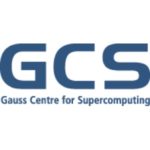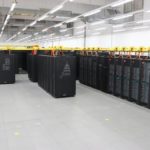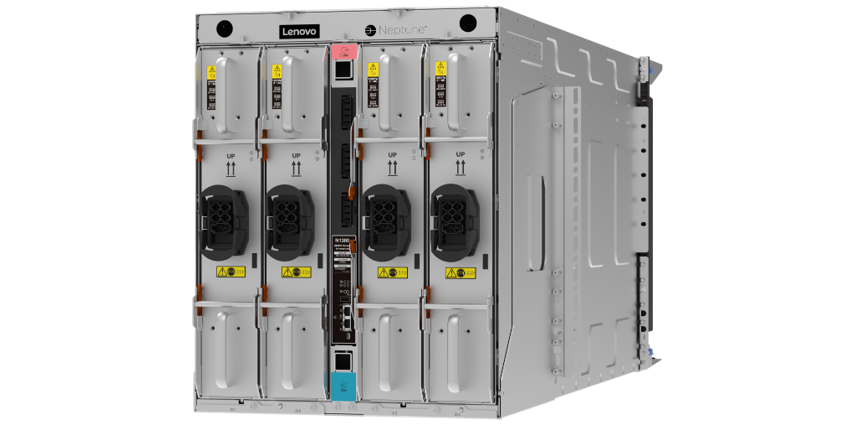Today the Irish Centre for High-End Computing (ICHEC) announced that it is leading a novel quantum simulation project in collaboration with partners at the Leibniz Supercomputing centre (LRZ) to develop quantum simulation tools for Europe’s largest supercomputers. “While actual quantum computing is still some way off, the simulation tools we are creating will advance the necessary concepts and skill-sets for quantum programming,” said Dr Niall Moran, Principal Investigator and project leader of the PRACE WP8 QuantEx project at ICHEC. “This work is being conducted with world-class research teams across a number of Irish third-level institutions and will contribute to preparing Ireland for Quantum programming.”
ICHEC to develop quantum circuit simulation tools for Europe’s largest supercomputers
Visualizing the World’s Largest Turbulence Simulation
In this visualization, LRZ presents the largest interstellar turbulence simulations ever performed, unravelling key astrophysical processes concerning the formation of stars and the relative role of magnetic fields. “Besides revealing features of turbulence with an unprecedented resolution, the visualizations brilliantly showcase the stretching-and-folding mechanisms through which astrophysical processes such as supernova explosions drive turbulence and amplify the magnetic field in the interstellar gas, and how the first structures, the seeds of newborn stars are shaped by this process.”
LRZ in Germany joins the OpenMP effort
The Leibniz Supercomputing Centre (LRZ) in Germany has joined the OpenMP Architecture Review Board (ARB), a group of leading hardware and software vendors and research organizations creating the standard for the most popular shared-memory parallel programming model in use today. “With the rise of core counts and the expected future deployment of accelerated systems, optimizing node-level performance is getting more and more important. As a member of the OpenMP ARB, we want to contribute to the future of OpenMP to meet the challenges of new architectures“, says Prof. Dieter Kranzlmüller, Chairman of the Board of Directors of LRZ.
Video: Lenovo Leads the TOP500 with Innovative HPC Cooling Technologies
In this video from SC18 in Dallas, Scott Tease from Lenovo describes how the company is leading the TOP500 with innovative HPC cooling technologies. “At #8 on the TOP500, the Lenovo-built, hot-water cooled SuperMUC system at the LRZ in Germany is one of the most power efficient supercomputers on the planet. With more than 241,000 cores and a combined peak performance of the two installation phases of more than 6.8 Petaflops.”
Intel Powers SuperMUC-NG Supercomputer at LRZ in Germany
In this video from SC18 in Dallas, Dieter Kranzlmueller from LRZ in Germany describes how Intel powers the SuperMUC-NG supercomputer. “The 19.4 Petaflop machine ranks number 8 among the fastest supercomputers in the world. SuperMUC-NG is in its start-up phase, and will be ready for full production runs in 2019. The machine, build in partnership with Lenovo and Intel, has a theoretical peak of 26.9 petaflops, and is comprised of 6,400 compute nodes based on Intel Xeon Scalable processors.”
GCS in Germany Grants 816 Million Core Hours to Science
Today the Gauss Centre for Supercomputing’s (GCS) in Germany awarded 816.3 million core hours as part of the organization’s 20th Call for Large-Scale Projects. The computing time grants support national research activities from the fields of Computational and Scientific Engineering (351.3 million core hours), Astrophysics (247.5 million core hours), and High Energy Physics (217.5 million core hours).
300K-Core SuperMUC-NG System Launches at LRZ in Germany
LRZ in Germany dedicated their new SuperMUC-NG (“next generation”) supercomputer last week in Munich. Built by Lenovo, the massive system uses innovative hot-water cooling to achieve unprecedented computational power for large-scale scientific and engineering simulations.
Prof. Dieter Kranzlmueller to showcase SuperMUC-NG Supercomputer at Event in Caserta
Prof. Dieter Kranzlmueller from LRZ will give a talk entitled “Smart Scaling for High Performance Computing: SuperMUC-NG at the Leibniz Supercomputing Centre.” The event takes place Monday, June 4 at the University of Campania in Caserta, Italy. “The SuperMUC-NG supercomputer will deliver a staggering 26.7 petaflop compute capacity powered by nearly 6,500 nodes of Lenovo’s recently-announced, next-generation ThinkSystem SD650 servers.”
Gauss Centre in Germany Allocates 1 Billion Computing Core Hours for Science
“With the 19th Call for Large-Scale Projects, the GCS steering committee granted a total of more than 1 billion core hours to 17 ambitious research projects. The research teams represent a wide range of scientific disciplines, including astrophysics, atomic and nuclear physics, biology, condensed matter physics, elementary particle physics, meteorology, and scientific engineering, among others.”
Warm Water-Cooling enables a fanless design for new Lenovo ThinkSystem SD650
Today Lenovo unveiled the new ThinkSystem SD650 server Direct Water Cooling for energy-efficient, high-density computing. Already deployed at the Leibniz Supercomputing Centre in Germany, the ThinkSystem SD650 will save customers up to 40% on energy costs while delivering a 10-15% performance improvement over air-cooled systems. “The system utilizes warm water instead of air to cool the components, including the CPUs and memory. Water conducts heat more efficiently, allowing customers to run their processors in “turbo” mode continuously, resulting in a performance improvement. The SD650 HPC servers have no system fans, operate at lower temperatures when compared to standard air-cooled systems and have negligible datacenter chilled water requirements. The result – lower datacenter power consumption of 30-40% compared to traditional cooling methods.”












